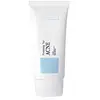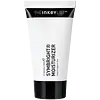What's inside
What's inside
 Key Ingredients
Key Ingredients

 Benefits
Benefits

 Concerns
Concerns

No concerns
 Ingredients Side-by-side
Ingredients Side-by-side

Water
Skin ConditioningGlycerin
HumectantDipropylene Glycol
HumectantMethylpropanediol
SolventGlyceryl Acrylate/Acrylic Acid Copolymer
HumectantPvm/Ma Copolymer
Emulsion StabilisingNiacinamide
SmoothingCetearyl Olivate
Sorbitan Olivate
EmulsifyingSalix Alba Bark Extract
AstringentDimethyl Sulfone
SolventPyridoxine Hcl
Skin ConditioningForsythia Suspensa Fruit Extract
AntioxidantButylene Glycol
HumectantCentella Asiatica Extract
CleansingPolygonum Cuspidatum Root Extract
AntioxidantScutellaria Baicalensis Root Extract
AstringentCamellia Sinensis Leaf Extract
AntimicrobialGlycyrrhiza Uralensis Root Extract
Skin ConditioningChamomilla Recutita Flower Extract
MaskingRosmarinus Officinalis Leaf Extract
AntimicrobialCarbomer
Emulsion StabilisingHydroxyethyl Acrylate/Sodium Acryloyldimethyl Taurate Copolymer
Emulsion StabilisingTromethamine
BufferingCopper Tripeptide-1
Skin ConditioningHydroxyacetophenone
AntioxidantMyrtus Communis Extract
AstringentTropaeolum Majus Extract
AntimicrobialEthylhexylglycerin
Skin ConditioningDisodium EDTA
Water, Glycerin, Dipropylene Glycol, Methylpropanediol, Glyceryl Acrylate/Acrylic Acid Copolymer, Pvm/Ma Copolymer, Niacinamide, Cetearyl Olivate, Sorbitan Olivate, Salix Alba Bark Extract, Dimethyl Sulfone, Pyridoxine Hcl, Forsythia Suspensa Fruit Extract, Butylene Glycol, Centella Asiatica Extract, Polygonum Cuspidatum Root Extract, Scutellaria Baicalensis Root Extract, Camellia Sinensis Leaf Extract, Glycyrrhiza Uralensis Root Extract, Chamomilla Recutita Flower Extract, Rosmarinus Officinalis Leaf Extract, Carbomer, Hydroxyethyl Acrylate/Sodium Acryloyldimethyl Taurate Copolymer, Tromethamine, Copper Tripeptide-1, Hydroxyacetophenone, Myrtus Communis Extract, Tropaeolum Majus Extract, Ethylhexylglycerin, Disodium EDTA
Water
Skin ConditioningGlycerin
HumectantGlyceryl Stearate Se
EmulsifyingCetearyl Alcohol
EmollientCaprylic/Capric Triglyceride
MaskingStearic Acid
CleansingPhenoxyethanol
PreservativeBenzyl Alcohol
PerfumingCarbomer
Emulsion StabilisingSclareolide
MaskingMica
Cosmetic ColorantKappaphycus Alvarezii Extract
Skin ConditioningEthylhexylglycerin
Skin ConditioningDehydroacetic Acid
PreservativeSodium Hydroxide
BufferingTerminalia Ferdinandiana Fruit Extract
AntioxidantTrisodium Ethylenediamine Disuccinate
Sea Water
HumectantCI 77891
Cosmetic ColorantWater, Glycerin, Glyceryl Stearate Se, Cetearyl Alcohol, Caprylic/Capric Triglyceride, Stearic Acid, Phenoxyethanol, Benzyl Alcohol, Carbomer, Sclareolide, Mica, Kappaphycus Alvarezii Extract, Ethylhexylglycerin, Dehydroacetic Acid, Sodium Hydroxide, Terminalia Ferdinandiana Fruit Extract, Trisodium Ethylenediamine Disuccinate, Sea Water, CI 77891
 Reviews
Reviews

Ingredients Explained
These ingredients are found in both products.
Ingredients higher up in an ingredient list are typically present in a larger amount.
Carbomer is a polymer of acrylic acid. Its main role is to create a gel consistency.
A high amount of carbomer can cause pilling or balling up of products. Don't worry, most products contain 1% or less of carbomer.
Ethylhexylglycerin (we can't pronounce this either) is commonly used as a preservative and skin softener. It is derived from glyceryl.
You might see Ethylhexylglycerin often paired with other preservatives such as phenoxyethanol. Ethylhexylglycerin has been found to increase the effectiveness of these other preservatives.
Glycerin is already naturally found in your skin. It helps moisturize and protect your skin.
A study from 2016 found glycerin to be more effective as a humectant than AHAs and hyaluronic acid.
As a humectant, it helps the skin stay hydrated by pulling moisture to your skin. The low molecular weight of glycerin allows it to pull moisture into the deeper layers of your skin.
Hydrated skin improves your skin barrier; Your skin barrier helps protect against irritants and bacteria.
Glycerin has also been found to have antimicrobial and antiviral properties. Due to these properties, glycerin is often used in wound and burn treatments.
In cosmetics, glycerin is usually derived from plants such as soybean or palm. However, it can also be sourced from animals, such as tallow or animal fat.
This ingredient is organic, colorless, odorless, and non-toxic.
Glycerin is the name for this ingredient in American English. British English uses Glycerol/Glycerine.
Learn more about GlycerinWater. It's the most common cosmetic ingredient of all. You'll usually see it at the top of ingredient lists, meaning that it makes up the largest part of the product.
So why is it so popular? Water most often acts as a solvent - this means that it helps dissolve other ingredients into the formulation.
You'll also recognize water as that liquid we all need to stay alive. If you see this, drink a glass of water. Stay hydrated!
Learn more about Water